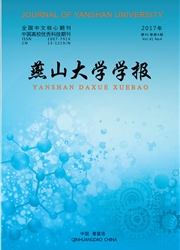

 中文摘要:
中文摘要:
基于超完备字典稀疏表示的图像复原利用字典的冗余性能够有效地恢复出图像的结构特征,但由于使用字典稀疏表示时需要对整幅图像进行分块处理,导致复原后的图像块之间重构图像常出现“伪像”效应。针对这一问题,本文将图像梯度稀疏统计特性作为先验知识加入稀疏表示图像盲去模糊模型中,提出了一种基于字典稀疏表示和梯度稀疏的图像盲去模糊算法,同时分析了算法的整体优化求解方法。实验分析和结果表明,本文算法能在一定程度上去除图像块之间的“伪像”效应,保持图像的结构特征和整体平滑。本文算法的去模糊图像在峰值信噪比和视觉效果两方面均有显著提高。
 英文摘要:
英文摘要:
Image restoration based on the over-complete dictionary sparse representation can recover the structural features of the image effectively, because of the redundancy of the dictionary. However, in this method, images are often decomposed into small patches, that means the artificial effects among image blocks cannot be avoided. In order to solve this problem, the statistical property of image gradient, as a priori knowledge, is added into the deblurring model, and a blind image deblurring algorithm based on dictionary sparse representation and sparse gradient is presented. At the same time, the whole optimization method of the algorithm is analysed in this paper. Experimental analysis and results indicate that the proposed algorithm can eliminate the artificial effects to some extent, remain the structure characteristics and gliding property. There is significant improvement in both visual quality and PSNR (peak signal-to-noise ratio).
 同期刊论文项目
同期刊论文项目
 同项目期刊论文
同项目期刊论文
 期刊信息
期刊信息
